#Disaster Risk Reduction (DRR)
Explore tagged Tumblr posts
Text
#20th Foundation Day of National Disaster Management Authority#National Disaster Management Authority (NDMA)#Disaster Management#Disaster Risk Reduction (DRR)#Disaster Preparedness#Disaster Response#Disaster Recovery#Disaster Relief#Climate Change#Natural Disasters
1 note
·
View note
Text
Disaster Risk Reduction and Management
Disaster Risk Reduction (DRR) and Management is a vital approach aimed at minimizing the potential risks and impacts of disasters, whether natural or man-made. As populations grow and urbanize, the need for effective disaster management strategies has become increasingly critical. This article will explore the key concepts, components, and significance of DRR and management. Understanding…
0 notes
Text
Islamic Relief Job Vacancy: Disaster Risk Reduction (DRR) Officer, Jakarta - Indonesia
ISLAMIC RELIEF JOB VACANCIES 2025 About the organization: Yayasan Relief Islami Indonesia (YRII) is an independent humanitarian and development organization. YRII, previously Islamic Relief Worldwide in Indonesia as globally with Islamic Relief Worldwide we have been fighting poverty and injustice for 30 years, in a world where more than three billion people still live in poverty Country…
0 notes
Text
India first responder for Global South in times of need: Piyush Goyal
Piyush Goyal Team News Riveting New Delhi, January 15 India today is known as the first responder to the Global South for its humanitarian initiatives in tines of natural disasters. This was stated by Union Minister of Commerce & Industry, Piyush Goyal during his address at the World Congress on Disaster Management, Disaster Risk Reduction (WCDM-DRR) Awards today in New Delhi. Goyal said that…
0 notes
Text
[ad_1] By Anjali Sharma WASHINGTON – India on Saturday has called to increase international collaboration on knowledge sharing, technology transfer, and sustainable development to enhance disaster resilience globally. Principal Secretary to Prime Minister P K Mishra led a high-level Indian Delegation, took part in G-20 Disaster Risk Reduction Working Group Ministerial Meeting from 30 October-1 November, held in Belem, Brazil. The consensus was reached in finalizing the first Ministerial declaration on Disaster Risk Reduction. Dr. Mishra shared the progress made by the Government of India in reducing disaster risks and in up scaling disaster financing in India. He emphasized India’s proactive approach to disaster risk reduction on five priorities of DRRWG, which were enunciated during Indian Presidency of G20 i.e. Early warning systems, Disaster resilient infrastructure, DRR financing, Resilient recovery and Nature based solutions. He shared the Prime Minister’s global initiative of Coalition for Disaster Resilience Infrastructure, which now has 40 countries and 7 International Organizations, as members. The Indian delegation took part in Troika meetings with the Ministers of Brazil and South Africa, and held bilateral meetings with ministers from the host country Brazil and other countries namely Japan, Norway, South Africa, South Korea, Germany, and Heads of invited International Organisations. Dr. Mishra shared experience and steps being taken, including the focus on promoting traditional practices to suit local conditions responding to the call by the United Nations Secretary General on Extreme Heat. The first DRR WG was established on India’s initiative during its Presidency of G20 in 2023. Dr Mishra, praised the Brazilian Presidency on its continuation of the DRRWG, and scaling it up to Ministerial level and affirmed India’s support to South Africa on DRRWG on their upcoming G20 Presidency next year. India’s participation underscores its growing role in global DRR efforts and its commitment to building a safer and more resilient world. The post India calls for global cooperation to enhance disaster resilience appeared first on Global Governance News- Asia's First Bilingual News portal for Global News and Updates. [ad_2] Source link
0 notes
Text
[ad_1] By Anjali Sharma WASHINGTON – India on Saturday has called to increase international collaboration on knowledge sharing, technology transfer, and sustainable development to enhance disaster resilience globally. Principal Secretary to Prime Minister P K Mishra led a high-level Indian Delegation, took part in G-20 Disaster Risk Reduction Working Group Ministerial Meeting from 30 October-1 November, held in Belem, Brazil. The consensus was reached in finalizing the first Ministerial declaration on Disaster Risk Reduction. Dr. Mishra shared the progress made by the Government of India in reducing disaster risks and in up scaling disaster financing in India. He emphasized India’s proactive approach to disaster risk reduction on five priorities of DRRWG, which were enunciated during Indian Presidency of G20 i.e. Early warning systems, Disaster resilient infrastructure, DRR financing, Resilient recovery and Nature based solutions. He shared the Prime Minister’s global initiative of Coalition for Disaster Resilience Infrastructure, which now has 40 countries and 7 International Organizations, as members. The Indian delegation took part in Troika meetings with the Ministers of Brazil and South Africa, and held bilateral meetings with ministers from the host country Brazil and other countries namely Japan, Norway, South Africa, South Korea, Germany, and Heads of invited International Organisations. Dr. Mishra shared experience and steps being taken, including the focus on promoting traditional practices to suit local conditions responding to the call by the United Nations Secretary General on Extreme Heat. The first DRR WG was established on India’s initiative during its Presidency of G20 in 2023. Dr Mishra, praised the Brazilian Presidency on its continuation of the DRRWG, and scaling it up to Ministerial level and affirmed India’s support to South Africa on DRRWG on their upcoming G20 Presidency next year. India’s participation underscores its growing role in global DRR efforts and its commitment to building a safer and more resilient world. The post India calls for global cooperation to enhance disaster resilience appeared first on Global Governance News- Asia's First Bilingual News portal for Global News and Updates. [ad_2] Source link
0 notes
Text
Puluhan Mahasiswa dari Filipina dan Indonesia Bahas Perubahan Iklim di Summer Course UGM
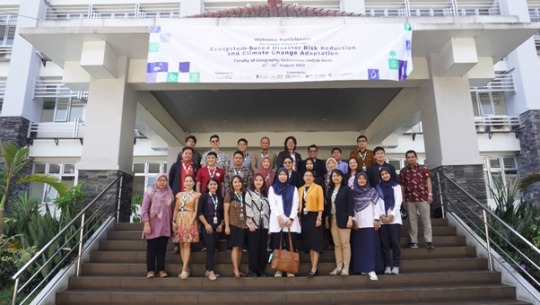
BALIPORTALNEWS.COM, YOGYAKARTA - Sebanyak 23 mahasiswa dari lima negara mengikuti Summer Course on Ecosystem-based Disaster Risk Reduction and Climate Change Adaptation (Eco-DRR and CCA) di Fakultas Geografi UGM pada 21-26 Agustus 2023. Dalam kegiatan yang berlangsung secara bauran tersebut para peserta belajar tentang upaya mitigasi dan adaptasi terhadap perubahan iklim yang resilien melalui pendekatan ekosistem. Tahun ini summer course diikuti peserta dari Filipina dan Indonesia yang sebagian besar merupakan dosen, mahasiswa Program Master ataupun Doktoral dari Fakultas Geografi dan Fakultas Teknik UGM dari Departemen Teknik Arsitektur dan Perencanaan. Kegiatan ini juga diikuti oleh perwakilan instansi pemerintah. Beberapa diantaranya Sekolah Tinggi Meteorologi, Klimatologi, dan Geofisika (STMKG) dan Kementerian Lingkungan Hidup dan Kehutanan (KLHK) Republik Indonesia. Pembukaan summer course dilaksanakan pada Senin (21/8/2023) yang dihadiri oleh 23 peserta dan narasumber yang berasal dari lima negara. Sambutan disampaikan oleh Koordinator Summer Course sekaligus mewakili Fakultas Gegorafi yaitu Wakil Dekan Bidang Penelitian, Kerja Sama, dan Alumni, Dr. Dyah Rahmawati Hizbaron, M.T., M.Sc., Lalu, dilanjutkan sambutan oleh perwakilan dari Southeast Asian Regional Center for Graduate Study and Research in Agriculture (SEARCA) Office. Dyah menyampaikan penyelenggaraan summer course tahun ini pertama kali dilaksanakan secara luring setelah terjadinya Pandemi Covid-19. Summer course kali ini merupakan kelanjutan dari berbagai aktivitas terkait Eco-DRR and CCA yang telah diselenggarakan oleh Fakultas Geografi UGM sejak tahun 2010. Summer course terdiri dari berbagai kegiatan berupa Short Course, Summer Course, Training of Instructors, Workshop, Webinar, Joint Research Project, dan Young Researchers School. Ditambahkan Dyah, untuk narasumber dari UGM berasal dari Fakultas Teknik, Pusat Studi Bencana, dan Pusat Studi Asia dan Pasifik. Selain narasumber dari luar UGM berasal dari University of Glasgow, Disaster Prevention Research Institute (DPRI) Kyoto University, Universita de Padova, UN Environmental Programm (UNEP), Partnership for Environment and Disaster Risk Reduction (PEDRR), University of Nagoya, and Chinese Academy of Science. “Lewat kegiatan summer course ini diharapkan dapat meningkatkan upaya memahami data, kondisi lapangan, dan upaya mitigasi dan adaptasi terhadap perubahan iklim yang resilien melalui pendekatan ekosistem. Upaya ini sejalan dengan komitmen UGM dalam peningkatan kualitas pembelajaran baik secara luring maupun virtual sebagai World Class University,” paparnya.(ugm.ac.id/bpn) Read the full article
0 notes
Text
Greenpeace Philippines Launches DRR Toolkit to Empower Communities in the Face of Climate Crisis

Uniting Communities for Resilience
In honor of National Disaster Resilience Month, Greenpeace Philippines unveiled a comprehensive disaster risk reduction (DRR) toolkit titled "Building resilient communities: Promoting people participation to address disaster risk." The launch took place at the Community Building Center in the Quezon City Hall, emphasizing the importance of empowering communities as a vital defense strategy in the era of climate crisis. Collaborative Creation for Resilient Communities Greenpeace Philippines collaborated with a consortium of civil society organizations (CSOs) and local government units (LGUs) to co-create the DRR toolkit. Partner organizations included Good Food Community, Tanglaw Kabataan ng Pinagbuhatan, United Architects of the Philippines, Kawayan Collective, Interfacing Development Interventions for Sustainability, Curiosity Design Research, Disaster Busters, and Move As One Coalition. The LGUs involved were Barangay Potrero, Malabon, and San Juan City Disaster Risk Reduction & Management Office. Inspiring Local Solutions The DRR toolkit showcases stories of hope, leadership, and community collaborations that generated localized solutions in addressing climate risk amidst the backdrop of the COVID-19 pandemic. By highlighting the contributions of empowered communities to local resilience building, the toolkit serves as a framework for implementing climate-friendly and people-centered DRR and climate change adaptation and mitigation (CCAM) practices at the grassroots level. Greenpeace campaigner Rhea Jane Pescador-Mallari emphasized, "Being in a climate crisis means being in a constant state of emergency. We need DRR strategies that support people participation and assert constant preparedness and urgency." The toolkit aims to inspire and motivate local government units and community groups by showcasing emergent, innovative, and grassroots-led programs and practices that contribute to climate solutions and resilience. Grassroots Wisdom for Resilience The toolkit includes 11 case studies from various provinces and cities across the Philippines. These studies demonstrate how DRR and CCAM programs greatly benefit from local indigenous knowledge, practices, and localized solutions. By involving grassroots groups in planning and fostering partnerships, conditions are created to promote their growth and enhance the effectiveness of DRR and CCAM efforts.
Stakeholders Rally for Urgent Climate Action
During the launch event, stakeholders emphasized the urgent need for climate action, particularly in communities that have already experienced the devastating effects of climate change, such as powerful typhoons, the looming El Niño, and urban heat. Partner LGUs and CSOs shared their realizations and best practices on resilient food systems, sustainable shelter and housing, inclusive mobility, people-oriented planning, and community-managed DRR initiatives. Policymakers and national government agencies (NGAs) were also invited to provide their insights on participative DRR policies and programs.
Engaging the Public for Resilient Cities
The DRR toolkit, titled "Building resilient communities: Promoting people participation to address disaster risk," is now available for free download at http://act.gp/drrtoolkit. The aim is to engage the public in actively building resilient cities and communities. The toolkit encourages collaboration among government institutions, local government units, and local community groups to foster a collective response to disaster risk reduction. Towards a Resilient and Inclusive Future San Juan CDRRMO Chief Saripada 'Tong' Pacasum Jr. stressed the significance of community-led resilience, stating, "Community-led resilience is the foundation for a thriving and empowered society, where individuals come together, harness their collective strength, and build a future that is resilient, sustainable, and inclusive." Mallari concluded, expressing a vision for the future, "In the future world we all deserve, Filipinos are able to mitigate the risk of flooding, stay safely in our houses and eat healthy meals during strong winds and typhoons, and have a reliable source of electricity during and after hazards." "This will be a reality once every sector of society is involved, not just consulted; when the most marginalized are co-powered, not just supported; and when every Filipino's right to participate in the community is recognized." Sources: THX News & Greenpeace - Philippines. Read the full article
#Buildingresilientcommunities#climatecrisis#Climatecrisissolutions#Climate-friendlypractices#Community-ledresilience#Disasterrisk#Disasterriskreductiontoolkit#Grassrootsinitiativesforresilience#Inclusivecommunitycollaborations#IndigenousknowledgeinDRR#Localizedclimateriskstrategies#ParticipativeDRRpolicies#Resilientcommunities
0 notes
Photo




From 1973 through 2017, Bangladesh’s three major rivers devoured more than 160,000 hectares of land. And researchers say river erosion is accelerating – driven in part by a changing climate.
#DRR#erosion#Bangladesh#Asia#South Asia#climate change#environment#Padma River#rivers#water#disaster#disaster risk reduction#early warning#disaster preparedness#river erosion#river training#hydrology
2 notes
·
View notes
Text
Climbing the Mountain in Japan
Climbing the Mountain in Japan
Mr.Takeshi Komino (on r.) General Secretary of CWS Japan with Dr. Ohashi, a pioneer in the development of the Non-Profit sector in Japan (Photo by Douglas Smith 2018) There continues to be surveys and accounts of the decline in attendance and affiliation with churches in the U.S. Although often characterized as evidence of the increasing secularization of the society, I believe this…
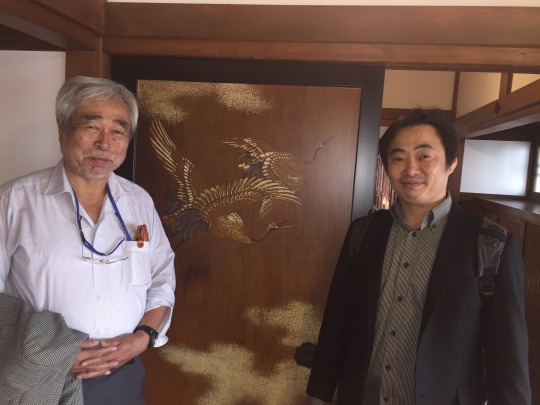
View On WordPress
#ACT Alliance#Contemporary Christian world mission#CWS Japan#Disaster Risk Reduction (DRR) in Asia#Interfaith solidarity in mission
0 notes
Photo

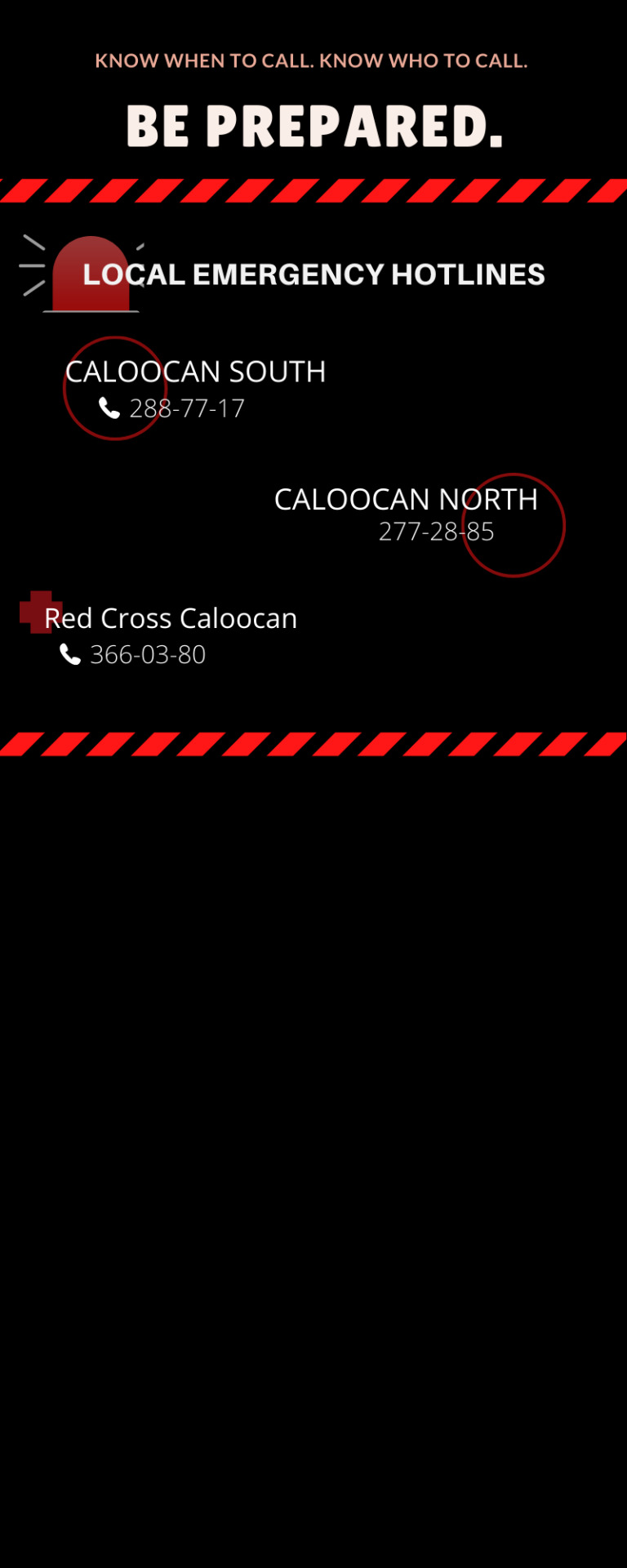
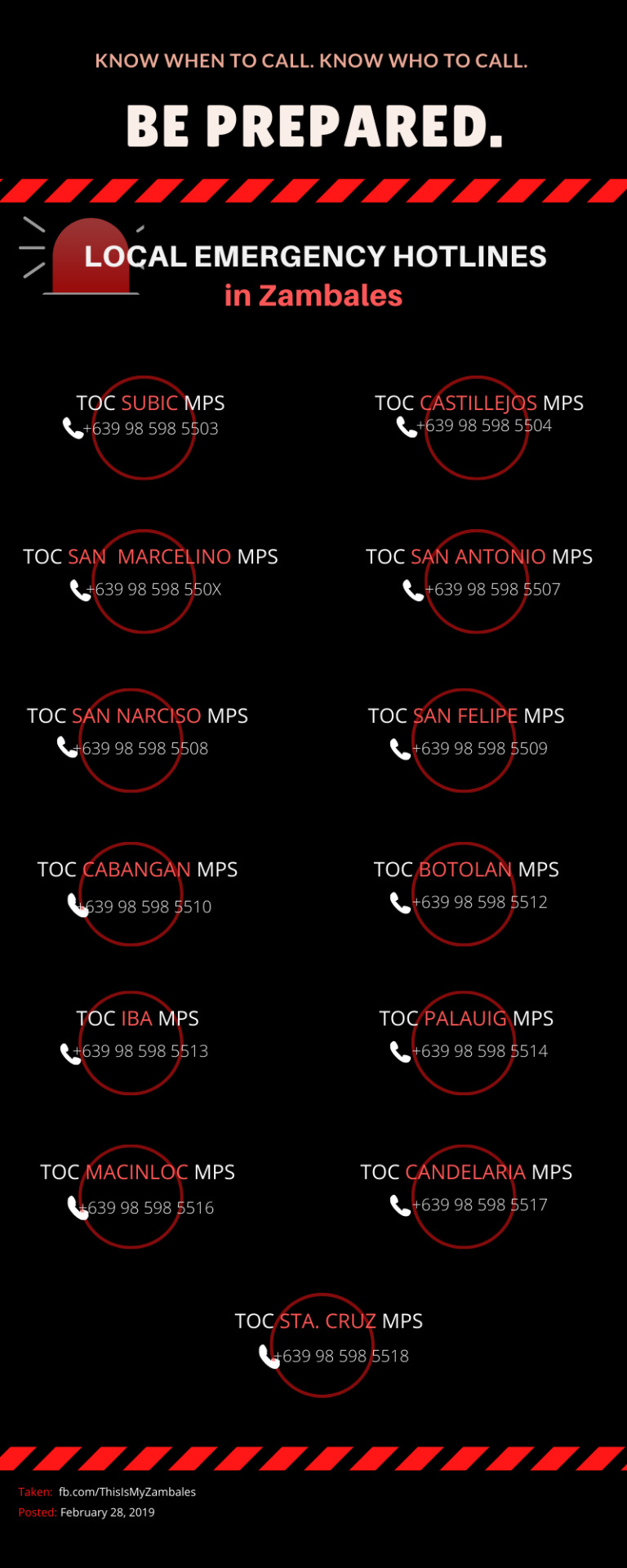
For our project, we were tasked to create an infographic showing our Local and National Emergency hotlines. Also, since our country is prone to strong typhoons (just like Typhoon Rolly and Ulysses that hit the Philippines during the past few weeks), we also included some ways in detecting hazards during typhoons.
0 notes
Link
The Bihar team was planning a cleaning drive, and reached out to a few gender champions and before they could know they were steering the #CleanPatnaDrive.
0 notes
Text
"We need to do away with the prevalent colonial mindset and the desire to create imposing megastructures" says Yasmeen Lari
Architect Yasmeen Lari calls for a form of low-impact architecture that benefits disadvantaged people in her manifesto written for the Dezeen 15 digital festival.
"The disadvantaged and those that live on the margins need more, not less, design to achieve a better quality of life," writes Lari, who champions what she calls "barefoot social architecture" in her native Pakistan.
"We need to do away with the prevalent colonial mindset and the desire to create imposing megastructures," writes Lari, who previously worked as a commercial architect but now dedicates her time to developing low-carbon projects, including housing schemes for victims of natural disasters.
"Moving forward, we must all stand for a humanistic, inclusive architecture that is driven by environmental considerations, that treads lightly on the planet and responds to the needs of the majority," she writes.
"I would like to see a new activism among architects," she adds.
Alongside her manifesto, Dezeen is publishing a range of Lari's projects that demonstrate her "barefoot" approach to architecture.
The Dezeen 15 festival features 15 manifestos presenting ideas that can change the world over the next 15 years. Each contributor will also take part in a live video interview.
See the line-up of contributors here and watch Lari's video interview live on Dezeen later today.
Social and Ecological Architecture for Humanity
We live in an era that is beset with fragmentation and disruptions; our world is ravaged by rising poverty levels, increasing disparities, resource depletion and climate change, together with the impact of Covid-19.
In this new world disorder, how can we continue to design only for the privileged one per cent who have acquired the most wealth?
Greenhouse gas emissions, recurring disasters, climate emergencies and consequent climate-change-migrants, conflict-impelled refugees, the displaced and the homeless – all these require innovative design solutions.
Under such challenging circumstances, when many countries in the world are unable to meet the United Nations' Sustainable Development Goals, it is the power of design that is in demand for serving the other 99 per cent. We need to remind ourselves that it is not only the privileged who have a right to enjoy well-designed environments. The disadvantaged and those that live on the margins need more, not less, design to achieve a better quality of life.
We must develop a framework for a changed direction in architecture
We must develop a framework for a changed direction in architecture. We need to do away with the prevalent colonial mindset and the desire to create imposing megastructures, which have traditionally been commissioned by the likes of the Medici family of Florence, the robber barons of the East India Company, the merchant princes of the industrial revolution, and present-day exploitative multinationals that promote wasteful high-carbon methodologies and highly consumptive modes of living.
I want us to reset concepts to deal with the new normal – to fashion an equitable world by democratising architecture, promoting community participation, co-building and co-creation, in order to help stitch the frayed tapestry of the earth; to take the lead in the use of sustainable, locally sourced materials; to incorporate attributes drawn from tradition and heritage; and to pursue carbon-neutral, circular-economy principles that would provide both social and ecological justice through architectural design.
Using such concepts, I have carried out large-scale projects in Pakistan, building over 50,000 zero-carbon, one-room houses and 70,000 zero-carbon fuel-efficient stoves along with scores of zero-carbon toilets, which have benefitted 840,000 persons over five years.
I have demonstrated the value of well-designed and affordable zero- and low-carbon structures using local green materials such as earth, lime and bamboo. Thus providing disaster risk reduction (DRR) compliance as well as dignified living for marginalised sections of society.
It is the three Ls (the least use of water, the least waste stream and the least use of energy) that can show us the right direction; and the three zeros (zero cost, zero carbon and zero waste) that can provide a path to zero poverty for the disadvantaged.
We must all stand for a humanistic, inclusive architecture that is driven by environmental considerations
I would like to see a new activism among architects for the adoption of innovative approaches such as degrowth, transition design as well as Barefoot Social Architecture, a stratagem that we devised to maximize the barefoot ecosystem for the empowerment of those living on the fringes, thus ensuring the well-being of humankind as well as our planet.
Barefoot Social Architecture fosters rights-based development providing shelter, sanitation, clean food and water at one-quarter of the usual cost through a process of self-building and co-creation. Its four tenets consist firstly of the Three Zeros as well as Zero Charity to provide self-worth and self-reliance among the poorest of the poor.
Secondly, it provides social and ecological justice through humanistic architecture fostering pride, dignity and well being and preventing depletion of the planet’s resources.
Thirdly, it delivers unmet needs of marginalized sections by training them as Barefoot Entrepreneurs through the Incubator for Social Good and Environmental Sustainability, which would help provide access to affordable products for people at the bottom of the pyramid.
Fourthly, it constructs well-designed non-engineered structures for shrinking the ecological footprint of buildings using green skills and locally sourced green materials.
Moving forward, we must all stand for a humanistic, inclusive architecture that is driven by environmental considerations, that treads lightly on the planet and responds to the needs of the majority – the vulnerable masses who have not been considered worthy of attention by architects but who can no longer be ignored in a global village where Covid-19 has blurred distinctions and equalized humanity.
Above: portrait of Yasmeen Lari. Main and first image: a school and a smokeless stove designed by Lari for disadvantaged people in Pakistan
Yasmeen Lari was the first Pakistani woman to qualify as an architect. Though she closed her practice in 2000, she continues to advocate "barefoot social architecture" and has built thousands of low-cost homes through the Heritage Foundation of Pakistan, a non-profit organisation she cofounded.
Find out more about Yasmeen Lari ›
The post "We need to do away with the prevalent colonial mindset and the desire to create imposing megastructures" says Yasmeen Lari appeared first on Dezeen.
3 notes
·
View notes
Text
The Integration and Strengthening of Vulnerable Segments of Society in Disaster Risk Reduction Initiatives (Evidence from Developing World)
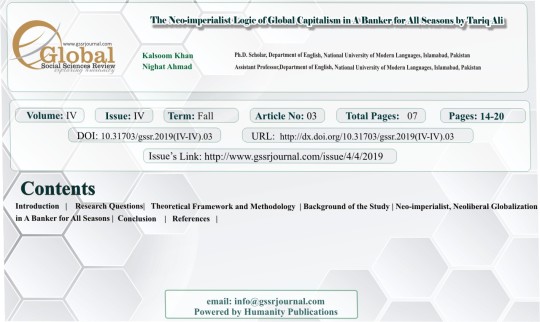
Abstract:
Disasters have the capacity to increase the weaknesses and vulnerabilities of marginalized groups of society. It is the need of the hour to include these segments to make the process of disaster risk reduction successful. This research article presents comprehensive information regarding global agenda and efforts made by developing countries for the empowerment & resilience of weak people during natural and man-made disasters. This article provides information on vulnerable groups are exploited for reaping benefits of DRR policies. Case studies are studied from developing world like, Indonesia, Cambodia, Philippines, Nepal, India & Myanmar to highlight the initiative taken to empower these segments. This evidence has been used in recommending more productive actions for inclusion of vulnerable people in DRR mechanisms in developing countries.
Authors:
1-Afsheen Zeeshan
Lecturer,Department of Government and Public Policy, National Defence University, Islamabad, Pakistan.
2-Shahzad Hussain
Assistant Professor,Department of Government and Public Policy, National Defence University, Islamabad, Pakistan.
3-Muhammad Bashir Khan
Assistant Professor,Department of Government and Public Policy, National Defence University, Islamabad, Pakistan.
Keywords:
Vulnerability, Empowerment, Inclusion, Resilience, Capacity Development, Disaster Risk Reduction
DOI Number:
10.31703/gssr.2019(IV-IV).02
DOI Link:
http://dx.doi.org/10.31703/gssr.2019(IV-IV).02
Page Nos:
8-13
Volume & Issue:
IV - IV
--------
Visit our Journal:
https://gssrjournal.com/
Visit our company website:
https://humapub.com/
--------
Visit our social sites:
Blogger:
https://www.blogger.com/profile/06358800635355881736
Facebook:
https://www.facebook.com/gssrjournal.int/
Flickr:
https://www.flickr.com/people/168570704@N04/
LinkedIn:
https://www.linkedin.com/company/gssrjournal/
Pinterest:
https://www.pinterest.com/gssrjournal/
Reddit:
https://www.reddit.com/user/GSSR2018
Instagram:
https://www.instagram.com/gssr_journal/
Tumblr:
https://www.tumblr.com/blog/gssrjournal
Twitter:
https://twitter.com/GSSRjournal
#gssrjournal #education #publications #humapub #researchpaper #researchstudy #humanitypublications #articles #books #magzines
2 notes
·
View notes
Text
Is your community prepared?: Community Involvement in Disaster Risk Reduction and Management
As someone living in one of the communities that make up one of the vast metropolises that continue to thrive economically, Quezon City deems urban resilience a vital aspect and social and economic concern in strengthening the city’s resilience. Where families and households are strong enough to withstand calamities and are also able to restore economic activity amidst the myriad of disasters.
To better visualize the overall purpose of this blog post, I would like to first share the economic and environmental issues the Philippines is currently facing.
Due to the geographic and physical features and location of the country, it is considered to be one most disaster-prone countries in the world. Situated along the western segment of the Pacific Ring of Fire, it lies in one of the most active part of the Earth characterized by an ocean encircling belt of active volcanoes and earthquake generators. Together with twenty-two (22) active volcanoes and six (6) known fault lines, the Philippines also sits astride the typhoon belt. The major part of the country experiences annual torrential rains and thunderstorms from July to October, with about nineteen (19) typhoons entering the country’s area of responsibility in a year with eight (8) to nine (9) of them making landfall on the country’s soil. This does not only make the Philippines vulnerable to flooding, but also vulnerable to climate change.
Sea level rise is one of the best-known climate change’s many dangers. As humanity pollutes the atmosphere with toxic substances that destroys the atmosphere, the planet becomes warmer and warmer. Thus, ice sheets and glaciers melt and warming sea water expands and increases in volume of the world’s oceans. The pollution and continuous onslaught of environmentally-detrimental human activities has become one of the top contributors to this growing concern. Especially in urban areas like Metro Manila, one of the most obvious human activity that sets the ground for environmental degradation is poor waste management. Improper wastes disposal, inefficient waste collection, lack of disposal facilities and the sheer loss of basic human decency and discipline has resulted in becoming one of the greatest threats to country’s environment and public health.
After hearing all these things, what can we do? Well, as of course in true Filipino fashion. We overcome. In our classes in Disaster Risk Reduction Management (DRRM), the term “Resilient”, Filipino or English, is a source of contention and controversy. While resilience is a noble word, it is also subject to scrutiny as to what does it mean to the country’s ability to bring back the sense of normalcy and improving itself. It shouldn’t simply mean smiling whilst standing knee-deep in floods or accepting the fact that our country’s legal justice system will always be something out of a dystopian novel, or even going far back as to think, “well, if it’s not broken, don’t fix it” to the state of our transportation system. UNISDR (United Nations Office for Disaster Risk Reduction) defines resilience as “the use of recovery, rehabilitation, and reconstruction phases after a disaster to increase ‘resilience’ of nations and communities through integrating DRR measures into the restoration of physical infra and societal systems, and into revitalization of livelihoods, economies, and the environment.” In other words, we learn from the events for us to be “more resilient.” For us to improve. And how can we do that? We start in our most basic unit of society, the family, then to the community.
To take a closer look to the one the communities preparing for such disasters, I went to visit my local barangay, Barangay Bagumbuhay.
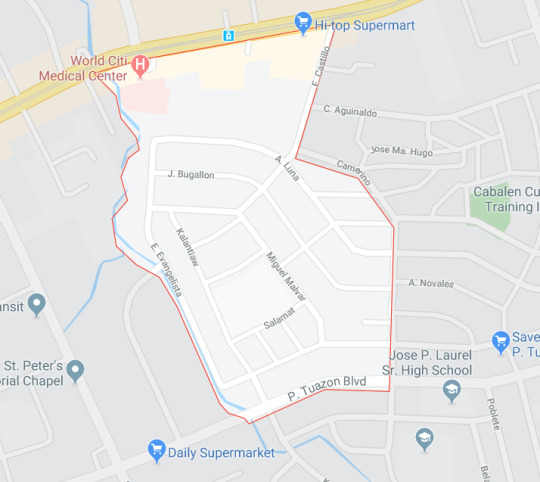
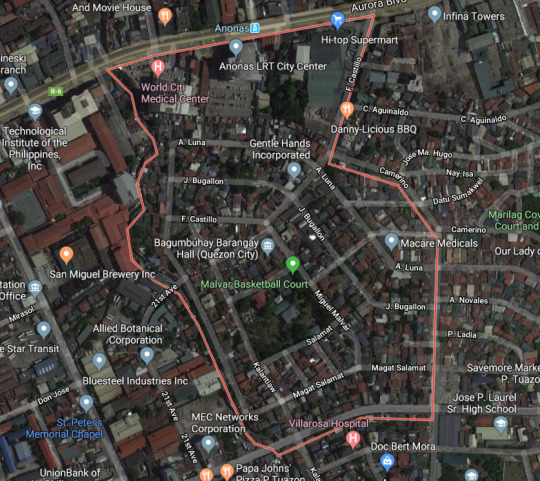
Barangay Bagumbuhay’s hall is right along the residential area of Miguel Malvar Street. Easily accessible by the Light Railway Transit (LRT) System (though it is currently closed for operations) or by jeeps coming from Cubao or Katipunan, going through Aurora boulevard.
Due to the location of the barangay, not a lot of natural hazards were identified. According to PHILVOC’s faultfinder, the barangay is approximately 1.6 km. from the nearest active fault trace, which is the West Valley Fault.
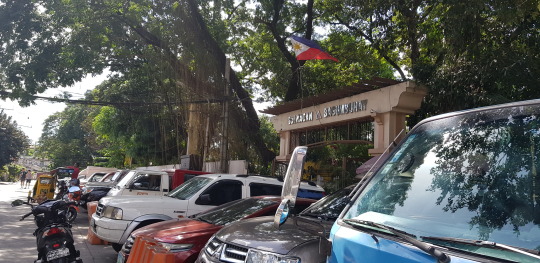
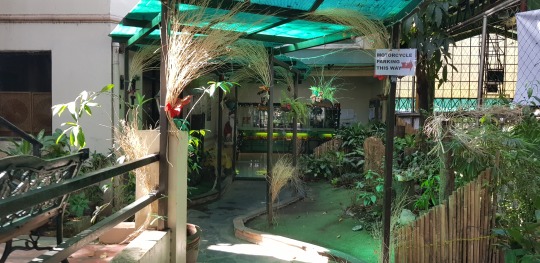
The barangay also had an advantage of being located right on top of a hill-like landmass, giving it the ability to rule out severe cases of flooding. However, there were still hazards to the community that were present. Namely, Anthropogenic hazards which were the structures and residential areas that were violating building code. Particularly the residential areas that were built atop the creek along F. Castillo Street. The officials fear that if these structures weren’t fixed immediately, they may become a danger to the residents should an offshoot of a disaster happened (e.g. fires). Blocked roads and alleys were also a danger since they served as a blockage to the entry and exit of residents to and from their homes, making it difficult for them to move through.
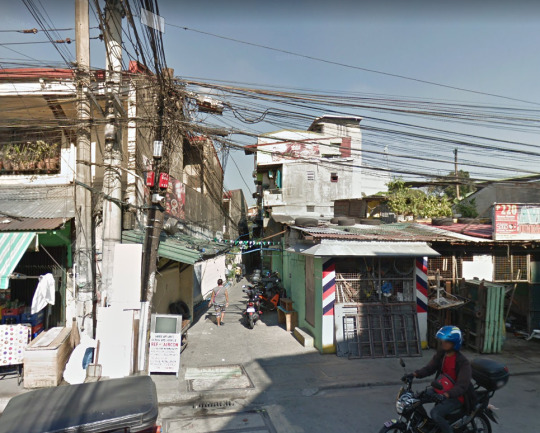
The officer in charge of the Disaster Risk Reduction and Management office of barangay Bagumbuhay, Estiño Martinez, introduced me to the various DRRM plans they had prepared in case the community faced a disaster. There were plans of evacuation locations for the nearby residents as well of those people who need special care and attention. Sr. Martinez provided a list of projects that had already been done and to be done (for 2020) in order to fulfill their duty of reducing the risk of any hazards that pose a threat to the community.
Sr. Martinez accompanied us in viewing the various preparations the had in store. For medical emergencies, for fire accidents, as well as for the aftermath of any disaster.
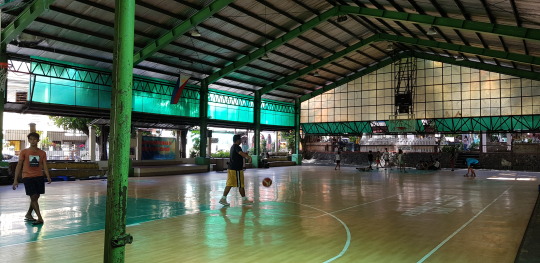
The multipurpose court to be used as an evacuation center for the community.
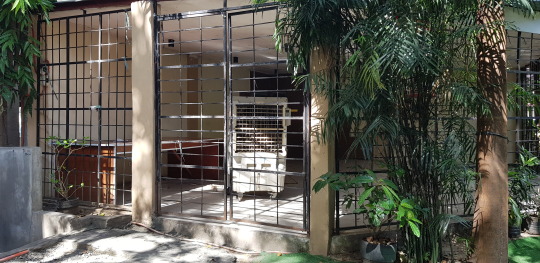
A funeral parlor and holding area for the families who are cannot afford the expenses of having a proper burial for their family member.
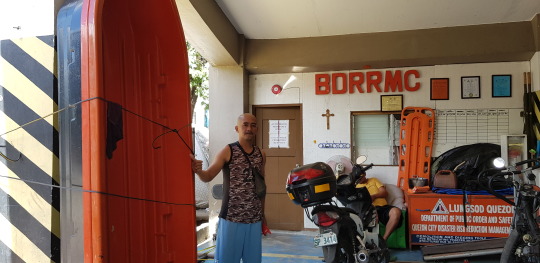
A Barangay Disaster Risk Reduction and Management Center right behind the hall. This includes the various materials and equipment to be used if in case of an emergency.
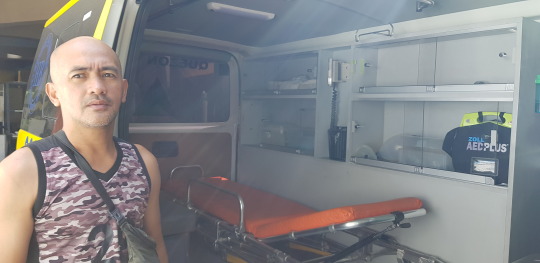
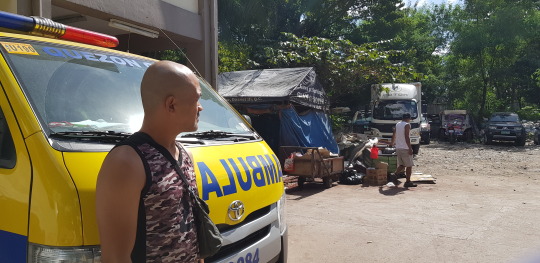
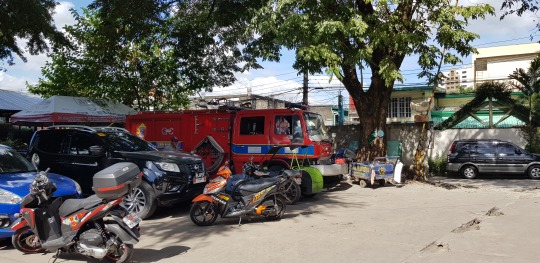
The fully-equipped ambulance and fire truck on stand-by 24-7. Sir. Martinez also informed us that the people manning these vehicles were always on site. He told us that they had shiftings in place for these positions as to prevent lacking important personnel if and when needed.
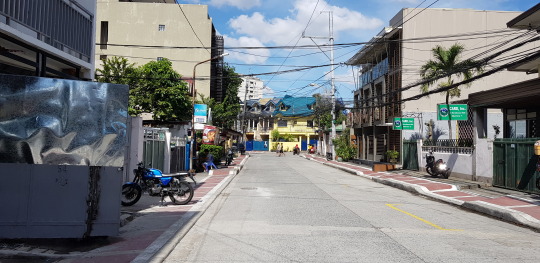
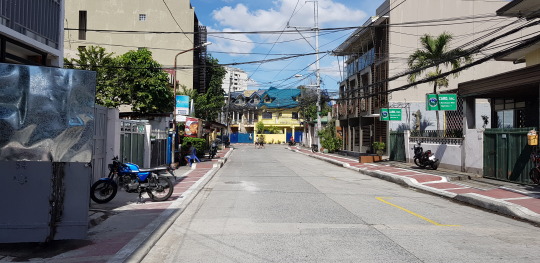
The barangay council also set forth a clearing operation for the entire Miguel Malvar Street. This was to prevent blockage or traffic for the emergency vehicles going in and out of the barangay hall area.
When I asked about the issues that the barangay faced in implementing their plans, he told us how sometimes there were residents who refused to take part in an operation they called Ugnayan. This system allowed residents to be informed of the basic and immediate reparations should a disaster ever happen. Seminars and workshops going on in the barangay is also openly given and provided to the residents. Sr. Martinez explained to us how participation of all the individual members of the community is what will ultimately help the community, not just the barangay personnel. The interview was then abruptly cut due to the schedules Sir. Martinez had.
Though our time was short, he was able to answer all my questions and expound on his answers in a concise manner. I am extremely grateful to Sir Martinez for giving me his time in answering all my questions.
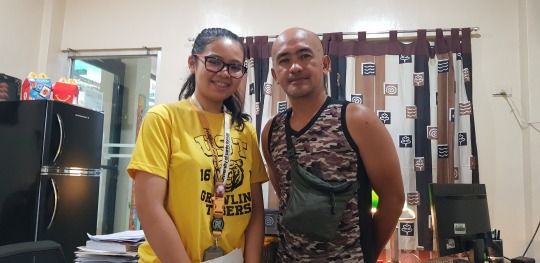
The interview led me to many conclusions about how vital it is for a community to be prepared for such disasters. In case of any disaster or emergency, before any government relief & support reaches or outside help is utilized, it is the Community which has to respond immediately (at the hour). As the Community plays the role of First Responder, it is critical that there is adequate awareness and preparedness at the Community level especially among the most vulnerable set of communities residing in the most vulnerable areas.
Disaster preparedness provides a platform to organize effective, realistic and coordinated planning, reduces the waste of efforts and increase the overall effectiveness of the individual, household and community members disaster preparedness and response efforts. Disaster preparedness activities that are planned with risk reduction measures can prevent disaster situations and also result in saving maximum lives and livelihoods during any disaster situation, enabling the affected community to easily get back on its feet within a short period of time. Community preparedness can be thought of as the advance capacity of a community to respond to the consequences of an adverse event by having plans in place so that people know what to do and where to go if a warning is issued or a hazard is observed.
What we plan with our families, our community, and in our country helps us consider our emergency response activities in light of existing and new disaster risks that is affecting us and our country. This allows us to design or adjust our activities so that people and communities and in the end, our country to become safer and more disaster-resilient, as well as safeguarding efforts to create and expand enabling conditions for sustainable poverty alleviation and development. This can help strengthen our communities and reduce our vulnerability to the multiple natural disasters heading our way.
The best way we can do to help our community and our country is to raise awareness. People being informed and equipped with the right knowledge will go a very long way. Just as the saying goes, it is better to know it and not need it than to need it and not know it.
We as a community must urge our those we have elected to government positions to quickly move in planning and developing projects that will protect the public. We must build resilience in ourselves and also in the systems of our society. We must approach climate change with fear, for what our children’s future will be, and courage and hope, that we can heal what has been done.
To our public officials, they must create and support national policies and strategies allocating the resources of the country to manage the risk threatening it. Everyone must help in pushing for change and improvement in access to quality primary health care even before disaster strikes.
To our workforce, we must be trained and equipped in planning for all types of emergencies. We need to be able to identify hazards, vulnerabilities, and our own capacities to lessen risks.
To the public, we as collective need to promote risk awareness of emergencies as well as providing health education to the youth. There is so much we can do when we join together for a cause that will protect us and our families.
True “resilience”, I believe, is not tolerance or ignorance of the system that is broken in the front of adversity. It is the triumphant improvement of ourselves, physically and socially to become better. A better Filipino nation that faces calamities not in a defeatist manner but with a strength of Filipinos coming together.
#text#text post#nstp#literary training service#barangay#disaster risk reduction and management#drrm#philippines#blog post
6 notes
·
View notes